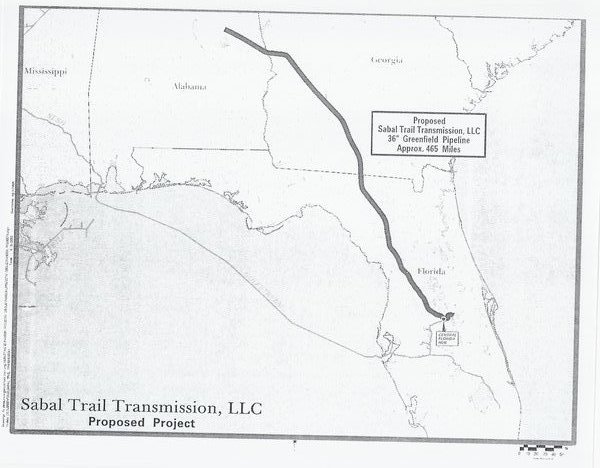Monsanto knew PCBs were toxic as it manufactured almost all of them, much like Roundup now. Monsanto drenched the town of Anniston, Alabama in PCBs and never told them. Guess where that pipeline through Georgia from Alabama to Florida starts? That’s right: Anniston, Alabama.
 According to CDC
Toxicological Profile for Polychlorinated Biphenyls (PCBs), November 2000,
“Approximately 99% of the PCBs used by U.S. industry were produced by the Monsanto Chemical Company in Sauget, Illinois, until production was stopped in August 1977.”
According to CDC
Toxicological Profile for Polychlorinated Biphenyls (PCBs), November 2000,
“Approximately 99% of the PCBs used by U.S. industry were produced by the Monsanto Chemical Company in Sauget, Illinois, until production was stopped in August 1977.”
By Michael Grunwald in Washington Post Tuesday, January 1, 2002; Page A01, Monsanto Hid Decades Of Pollution: PCBs Drenched Ala. Town, But No One Was Ever Told ( original URL no longer works),
ANNISTON, Ala. — On the west side of Anniston, the poor side
of Anniston, the people ate dirt. They called it “Alabama clay” and cooked it for extra flavor. They also grew berries in their gardens, raised hogs in their back yards, caught bass in the murky streams where their children swam and played and were baptized. They didn’t know their dirt and yards and bass and kids — along with the acrid air they breathed — were all contaminated with chemicals. They didn’t know they lived in one of the most polluted patches of America.
Now they know. They also know that for nearly 40 years, while producing the now-banned industrial coolants known as PCBs at a local factory, Monsanto Co. routinely discharged toxic waste into a west Anniston creek and dumped millions of pounds of PCBs into oozing open-pit landfills. And thousands of pages of Monsanto documents — many emblazoned with warnings such as “CONFIDENTIAL: Read and Destroy” — show that for decades, the corporate giant concealed what it did and what it knew.
In 1966, Monsanto managers discovered that fish submerged in that creek turned belly-up within 10 seconds, spurting blood and shedding skin as if dunked into boiling water. They told no one. In 1969, they found fish in another creek with 7,500 times the legal PCB levels. They decided “there is little object in going to expensive extremes in limiting discharges.” In 1975, a company study found that PCBs caused tumors in rats. They ordered its conclusion changed from “slightly tumorigenic” to “does not appear to be carcinogenic.”
Monsanto enjoyed a lucrative four-decade monopoly on PCB production in the United States, and battled to protect that monopoly long after PCBs were confirmed as a global pollutant. “We can’t afford to lose one dollar of business,” one internal memo concluded.
 Is this what the natural gas industry thinks of Georgians?
Is this what the natural gas industry thinks of Georgians?
“Monsanto did a job on this city,” she said. “They thought we were stupid and illiterate people, so nobody would notice what happens to us.”
Now that PCBs are considered “probable” human carcinogens by the EPA and the World Health Organization, it is easy to forget that they were once known as miracle chemicals.
Sort of like that “shale gas revolution” that’s producing the natural gas Sabal Trail Transmission LLC wants to pipe through Lowndes County, Georgia from Anniston, Alabama.
-jsq
Short Link:
Pingback: Path of proposed pipeline through Lowndes County | On the LAKE front